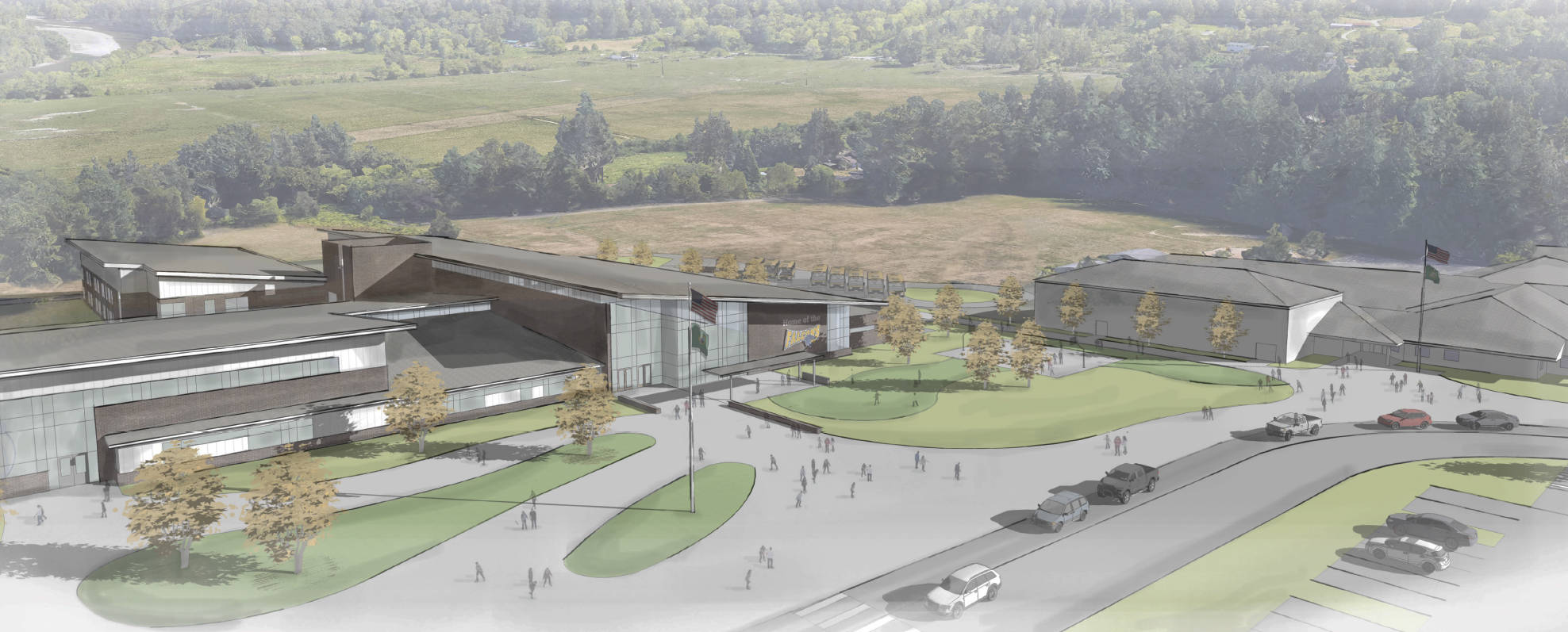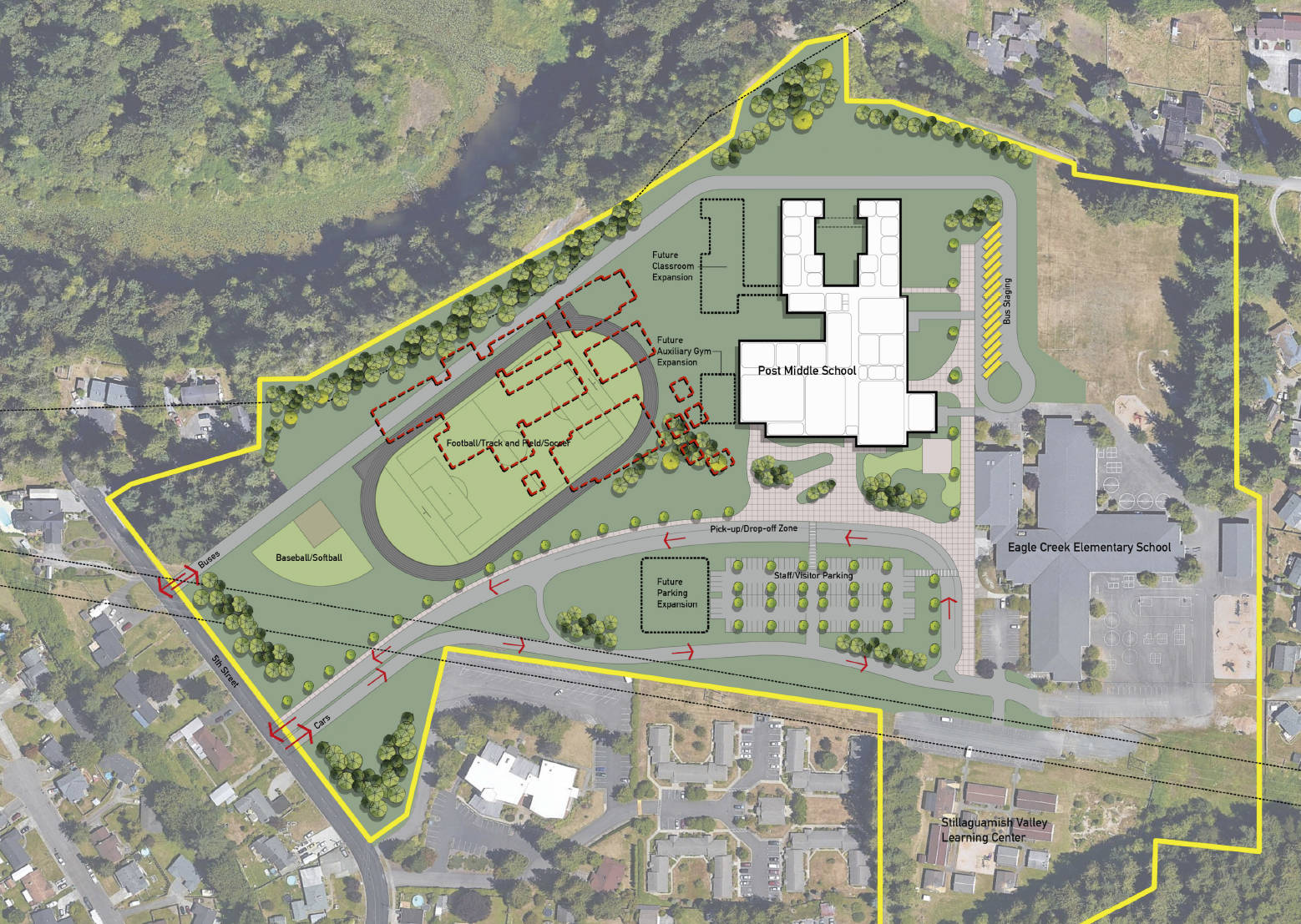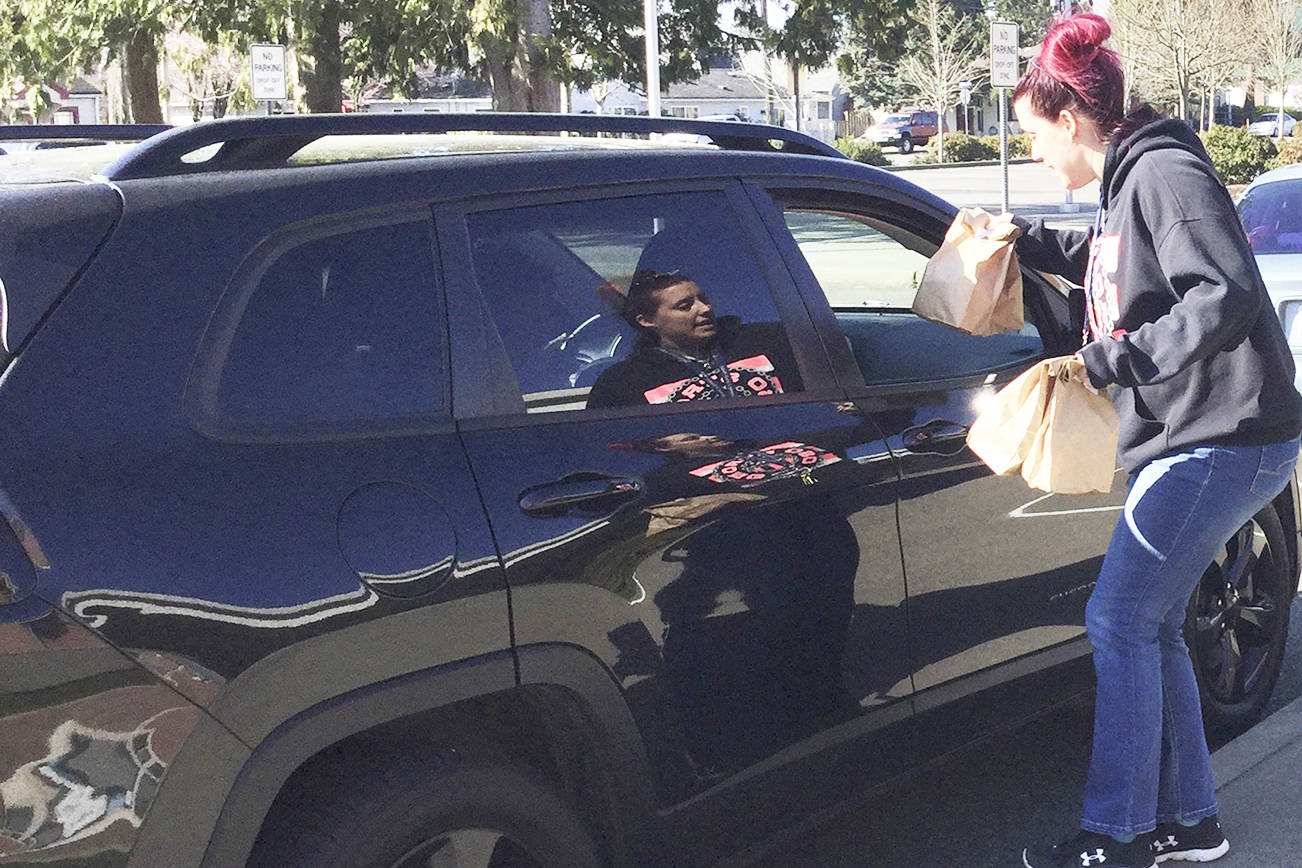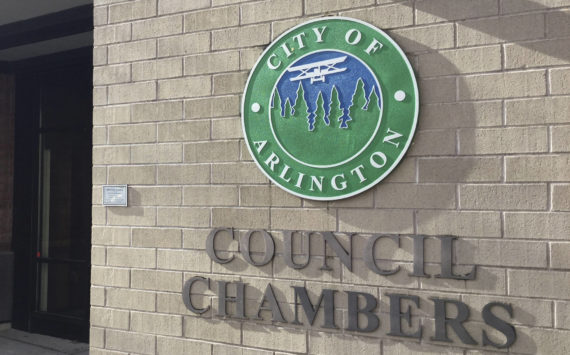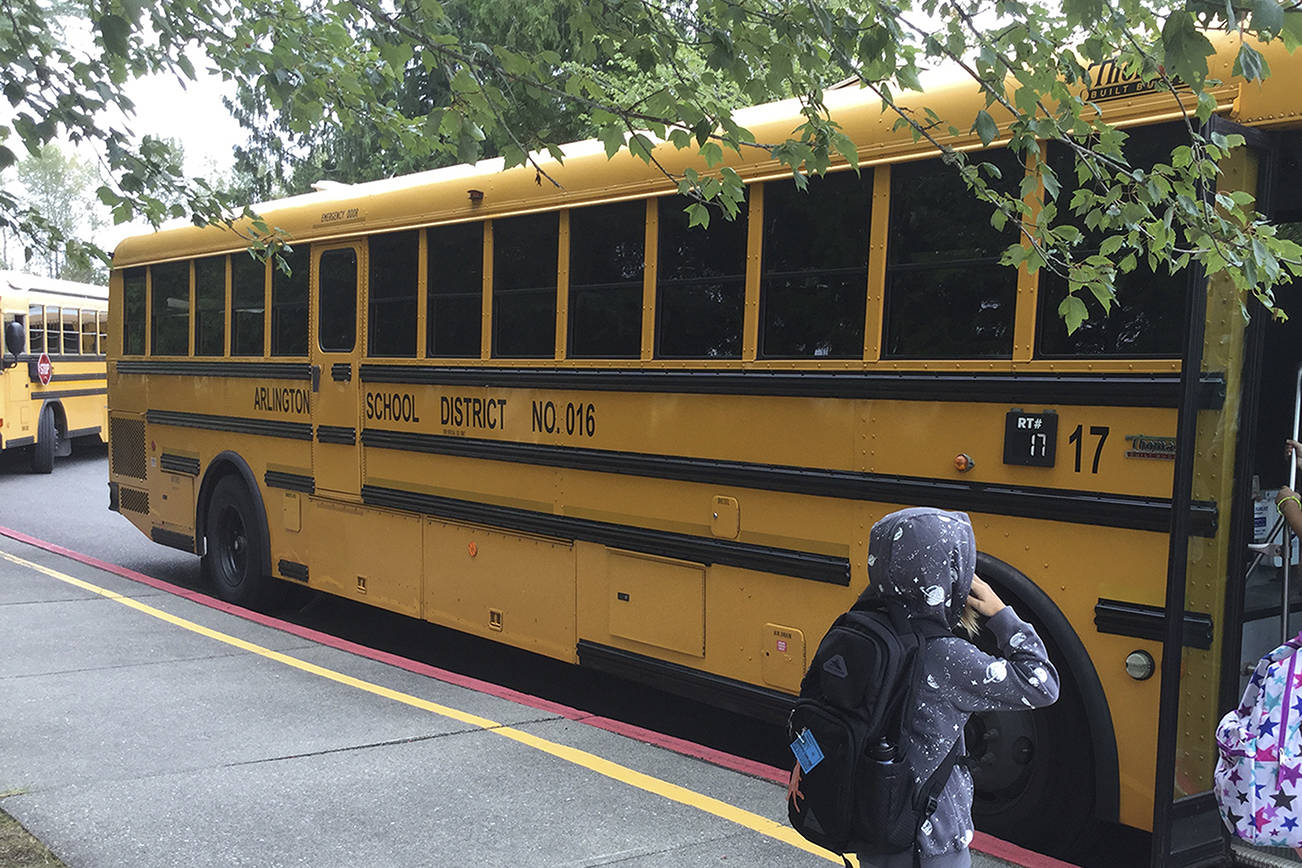ARLINGTON – The Arlington School Board is being asked to approve plans to take a $107.5 million bond issue to voters in February.
The proposal is recommended by a 27-member committee that spent over a year reviewing the shape that buildings are in and classroom space needs within the growing district.
“The bond does touch every school in the district,” Chris Lilly, CEO with McGranahan Architects, said at a presentation to the school board Monday. The Seattle firm also led the new Lakewood High project that opened this school year.
The big project in the bond package is $72.2 million to replace Post Middle School, suggested by the committee as a better long-term investment than a modernizing renovation, said Brian Lewis, district executive director of operations. A facilities master plan indicated that the campus buildings and outdoor walkways create a security problem.
Built 38 years ago, Post does not meet standards for earthquake and fire safety, and while classrooms have been added, the four buildings don’t have the room to incorporate STEM and art classes.
The new 120,187-square-foot secure and self-contained school would serve 800 students, about 50 more than the current capacity. And it would have the ability to expand to 900 students, Lilly said. The campus would be built closer to Eagle Creek Elementary, and a new track and athletic fields would be built on the school’s current site. The school would feature 15 general classrooms, five science labs, six STEAM labs, including for art, special education resource rooms, band and music rooms, stage, kitchen and commons, library, main gym and auxiliary rooms, as well as open spaces to work independently or with groups.
Arlington High School would see $9.7 million in improvements in the bond proposal.
The 1,561-student school would add an eight-classroom addition to the C Wing and a new STEAM workshop, synthetic turf for the baseball infields, a permanent roof for the batting cages, track resurfacing and a covered bus drop-off area.
Addressing security concerns at the high school, Lewis said features would be added at the back of the building, and structural changes would be made in the front.
Lewis said campus safety was a paramount concern across all district schools.
“We don’t have good security camera coverage right now, and they do serve a role in deterring crime or detecting crime,” he said.
New cameras and software would incorporate facial recognition features to better assist law enforcement, and couple with modern alarm systems would better let security know who is coming and going.
Here is an overview of other priorities in the bond proposal:
• Security improvements at all schools, including surveillance cameras, interior door locks, HVAC and control improvements.
• For all elementary schools, classroom amplification would be installed so miked up teachers can be heard better and playfield drainage would be addressed at all schools as well, including the often saturated fields at Eagle Creek.
• Improve dropoff areas at the high school, and Kent Prairie and Eagle Creek elementaries.
• Replace flooring, data systems, clocks and intercom systems at Kent Prairie and Eagle Creek.
• New running track and grandstand structural improvements at Haller Middle School.
• Bus yard and garage improvements at the district transportation center.
• Fire suppression system and fire alarms at Eagle Creek.
If voters approve the measure, design and permitting would take about two years, with small projects getting done right out of the gate in 2019, Lewis said. The big year for projects, including Post, would be 2020, with hopes it would open a year later.
Lewis said the district worked to avoid the bond route – or at least bring down the dollar amount – by completing maintenance projects in the 2014 facilities master plan. These included replacing the grass field with synthetic turf at the high school, and replacing the gym’s floor, roof and scoreboard at Haller.
Existing bonds passed nearly two decades ago will be paid off by 2020.
Lewis said the overall tax rate between bonds and operation levies should drop from $4.93 per $1,000 of assessed valuation in 2017 to $3.76 per $1,000 in 2019 if the bond passes next year.
Average property values are estimated to rise in the district by 6.9 percent in 2017, 11 percent next year, he said, with 2 percent conservatively projected over the next 20 years and the life of the bond.
During the committee’s monthly meetings, the district conducted an online survey and held two community workshops at Post.
Mike Ray, a Post Middle School parent who served on the facilities advisory committee, said voters can be confident that the bond package represents the best approach to modernizing schools for safety and security, and meeting future enrollment needs.
The bond measure on the Feb. 13 special election ballot would require a 60 percent “yes” vote.
A draft of the ballot measure language will be presented to the school board Oct. 23.
